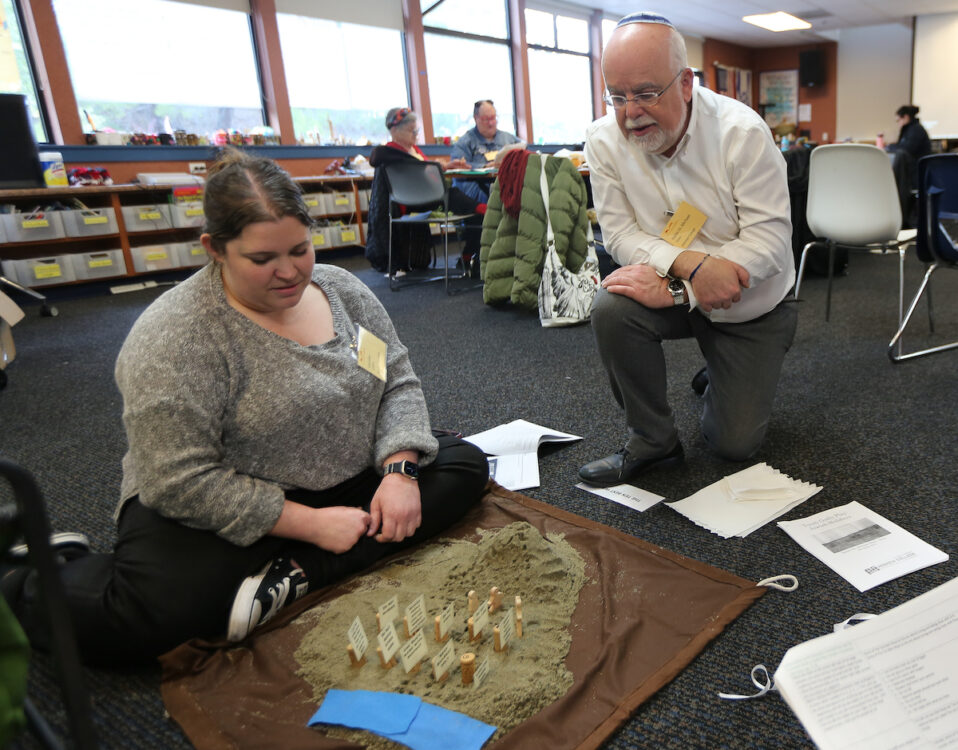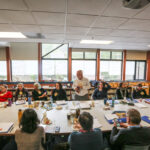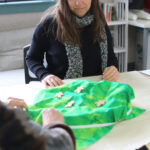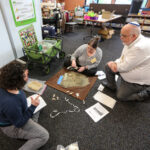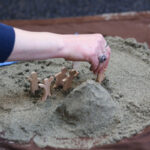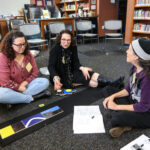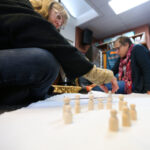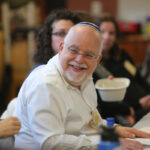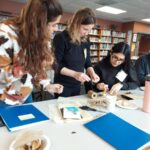by Liora Brosbe, Jewish LearningWorks Senior Educator
I joined everyone outside the room, and waited for my turn to come in the door.
The person at the door is called “the doorkeeper” and welcomed me, asking “Are you ready to hear a story?” I was!
I entered the room, and joined the others in a half circle facing the storyteller.
First he unwrapped a special bag, it looked scratchy! Inside was sand and the story began in the desert. I sat very still, and listened to each word. I could even hear the steps the people made through the sand as they made their journey. God was in the story, and told Abraham, Sarah and others about what would become the Jewish people.
Everyone was quiet, we all listened.
I wonder when I can hear another story like this one.
Sunday, March 12 was a rainy day in Lafayette, but 20 Jewish educators from around the Bay Area (and two from San Diego!) gathered, and experienced genuine warmth in a comfortable room at Contra Costa Jewish Day School. The day-long training was facilitated by Rabbi Dr. Michael Shire the founder of Torah Godly Play, a modality of Torah storytelling, and spiritual engagement based on Godly Play, a primarily Christian model.
The intimate group was focused on educators who work with young learners, mainly students in preschool-2nd grade. Participants were faculty from Day Schools, Preschools, Congregational schools, and other educational programs.
Despite many of us meeting for the first time (in fact this was Rabbi Shire’s first in-person Torah Godly Play Training in three years!) listening to one another, wondering together, and learning how to help our students enter the world of Torah values, characters, and questions, made us feel connected
Together we learned the concepts of the storytelling process. We used pre-written scripts, and simple yet evocative materials. We engaged in the wondering process responding to specific questions that Rabbi Shire asked us about the story we had just heard:
I wonder which part of the story you liked the best?
I wonder which part of the story is the most important?
I wonder where you are in the story?
I wonder which part of the story is about you?
I wonder if there is any part of the story we can do without and still have all the story we need?
These simple, yet provocative questions opened our hearts to the story and one another, deepening our relationship to the narrative. We also spent time individually, and in pairs participating in the creative exploration activity to deepen our spiritual connection to the stories, and make meaning.
Throughout the day we heard Rabbi Shire tell the stories in an intentional, and calm manner. We had the opportunity to practice with the scripts, the movements of the people and following the outlined hand movements for each part of the story:
Put the people at your far right at the
edge of the desert. Spread the fingers
of your two hands over and around
the people, as if trapping them, to
show they are enslaved.
When you say, “Called out to God,”
open your fingers to the sky; spread
them and stretch them up a bit.
When you say, “God loved,” tenderly
hover one hand above the people.
Each aspect of telling the story is carefully designed, in the spirit of Montessori principles, to engage and invite the listener to enter into the spirituality, and wonder of Torah stories. We all had the opportunity to listen and tell, and left the day filled with the wonder and intentional concepts to teach Torah stories.



